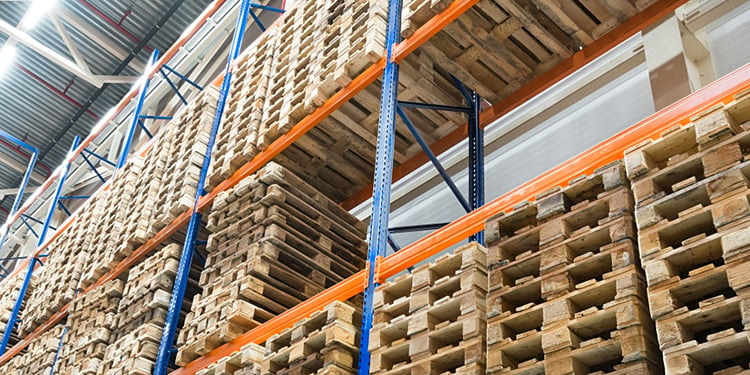
The importance of matching Pallets to Rack type for safe handling
Products arrive in warehouses and distribution centers on any number of pallet types these days: two-way entry, four-way entry, skids, slip-sheets, nine-block, and more. Some pallets are designed with multiple boards—or stringers—spanning the bottom surface; others have a foot in each corner. Pallets also come in a broad range of materials: wood, plastic, steel, paper, presswood, and others. They can come in various dimensions depending on the type of load and industry-specific requirements.
To ensure that a rack system will safely support the type(s) of pallet(s) an operation is using, it’s critical to share all pallet construction and load details with the rack design engineer to ensure a safe operation and work environment. That’s because the storage rack system is designed specifically to work with a given type of pallet and load, taking into account—among many additional factors—the distribution of the load weight. Implementing comprehensive pallet rack safety protocols, including regular inspections and proper load placement, is crucial for
Some facilities will even have different storage rack systems engineered to accommodate different pallets and loads in order to maximize the operation’s capacity. That’s one reason why ANSI MH16.1-2012 requires load capacity plaques: Specification for the Design, Testing and Utilization of Industrial Steel Storage Racks, published by RMI. Section 1.4.2 states that the rack “owner is responsible for displaying in one or more conspicuous locations a permanent plaque(s)” with the following details:
- The maximum permissible unit load (the combined weight of the product and its storage container or pallet) and/or maximum uniformly distributed load per level.
- The average unit load (calculated as the maximum total weight of product expected on all beam levels in any row, divided by the number of beam levels in that row), if applicable.
- The maximum total load per bay.
- Indication of storage levels that support stacking of multiple unit loads.
As different rack configurations might be engineered to accommodate different pallet types used within the same building or even the same aisle, it’s a good practice to place a plaque on every aisle for every configuration. The rack manufacturer usually provides plaques for installation.
Want to learn more about the considerations rack engineers take into account when designing a pallet rack structure? Purchase the ANSI MH16.1-2012: Specification.









